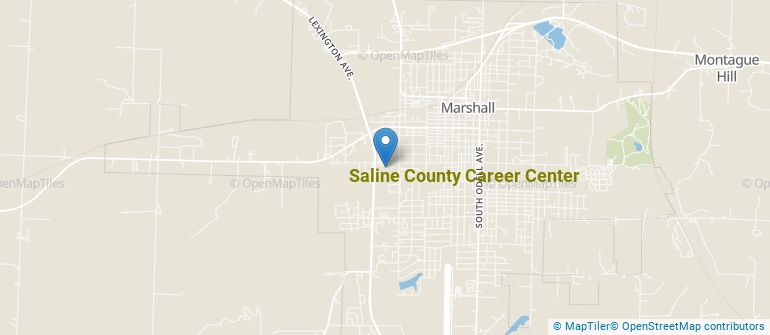Saline County Career Center Nursing Programs
Saline County Career Center is a public institution located in Marshall, Missouri. Marshall is a good match for students who enjoy small-town life.
Where Is Saline County Career Center?

Contact details for SCCC are given below.
| Contact Details | |
|---|---|
| Address: | Sccc Adult Education Center, 2285 S Hwy 65, Marshall, MO 65340-1698 |
| Phone: | 660-631-8781 |
| Website: | www.marshallschools.com |
Admission Requirements for SCCC
| Submission | Required? |
|---|---|
| High School GPA | 3 |
| High School Rank | 3 |
| High School Transcript | 1 |
| College Prep Program | 3 |
| Recommendations | 1 |
| SAT or ACT Scores | 3 |
| TOEFL | 1 |
How Hard Is It To Get Into SCCC?
Can I Afford Saline County Career Center?
Student Loan Debt
It's not uncommon for college students to take out loans to pay for school. In fact, almost 66% of students nationwide depend at least partially on loans. At SCCC, approximately 100% of students took out student loans averaging $3,956 a year. That adds up to $15,824 over four years for those students.
The student loan default rate at SCCC is 3.2%. This is significantly lower than the national default rate of 10.1%, which is a good sign that you'll be able to pay back your student loans.
Saline County Career Center Undergraduate Student Diversity
Gender Diversity
Of the 23 full-time undergraduates at SCCC, 4% are male and 96% are female.

Racial-Ethnic Diversity
The racial-ethnic breakdown of Saline County Career Center students is as follows.

| Race/Ethnicity | Number of Grads |
|---|---|
| Asian | 0 |
| Black or African American | 0 |
| Hispanic or Latino | 1 |
| White | 20 |
| International Students | 0 |
| Other Races/Ethnicities | 2 |
Saline County Career Center Nursing Concentrations
The table below shows the number of awards for each concentration.
| Major | Undergraduate Certificate | TOTAL |
|---|---|---|
| Licensed Practical/Vocational Nurse Training | 16 | 16 |
| TOTAL | 16 | 16 |
References
*The racial-ethnic minorities count is calculated by taking the total number of students and subtracting white students, international students, and students whose race/ethnicity was unknown. This number is then divided by the total number of students at the school to obtain the racial-ethnic minorities percentage.
More about our data sources and methodologies.
